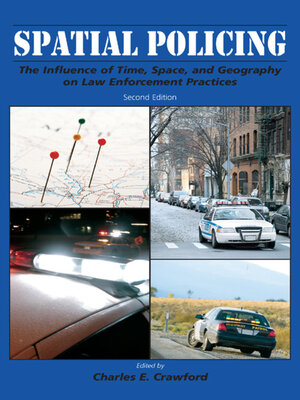Spatial Policing
ebook ∣ The Influence of Time, Space, and Geography on Law Enforcement Practices
By Charles E. Crawford

Sign up to save your library
With an OverDrive account, you can save your favorite libraries for at-a-glance information about availability. Find out more about OverDrive accounts.
Find this title in Libby, the library reading app by OverDrive.



Search for a digital library with this title
Title found at these libraries:
| Library Name | Distance |
|---|---|
| Loading... |
The inner city, rural community, border town, and the college campus. Each of these terms reflects a unique space. For citizens and police officers, these spaces may seem familiar and welcoming to some, or represent a dangerous foreign place to others even though they may be only blocks or a few miles apart. The exploration of the spatial differences raises important questions: what is it about an area of the city that makes it unsafe? How does race and ethnicity become enmeshed in a space? Why do the police act, speak, and patrol so differently across segments of the city and with different groups in these spaces? At their core these questions all show an awareness of the power of space. This new edition of Spatial Policing continues the fascinating look at how the context of space influences policing.
Two new chapters to the second edition include Policing Cyberspace and Policing Borders. Additionally, each of the original chapters has been updated and discusses the most relevant current issues for space and law enforcement from urban settings, to rural, to the space of minorities, and surveillance in the city. Each environment represents a unique challenge for individual officers, departments, and their enforcement efforts in our society. Recognizing how space is used and defined provides the missing context that conditions the interactions between citizens and the police, and is the foundation of Spatial Policing.
Each chapter in Spatial Policing is written by leading experts in law enforcement, spatial, and cultural issues in criminal justice providing a highly readable text, and offers an in-depth discussion of theory, legal issues, research findings, as well as real world examples of the most important spatial contexts for police actions.







